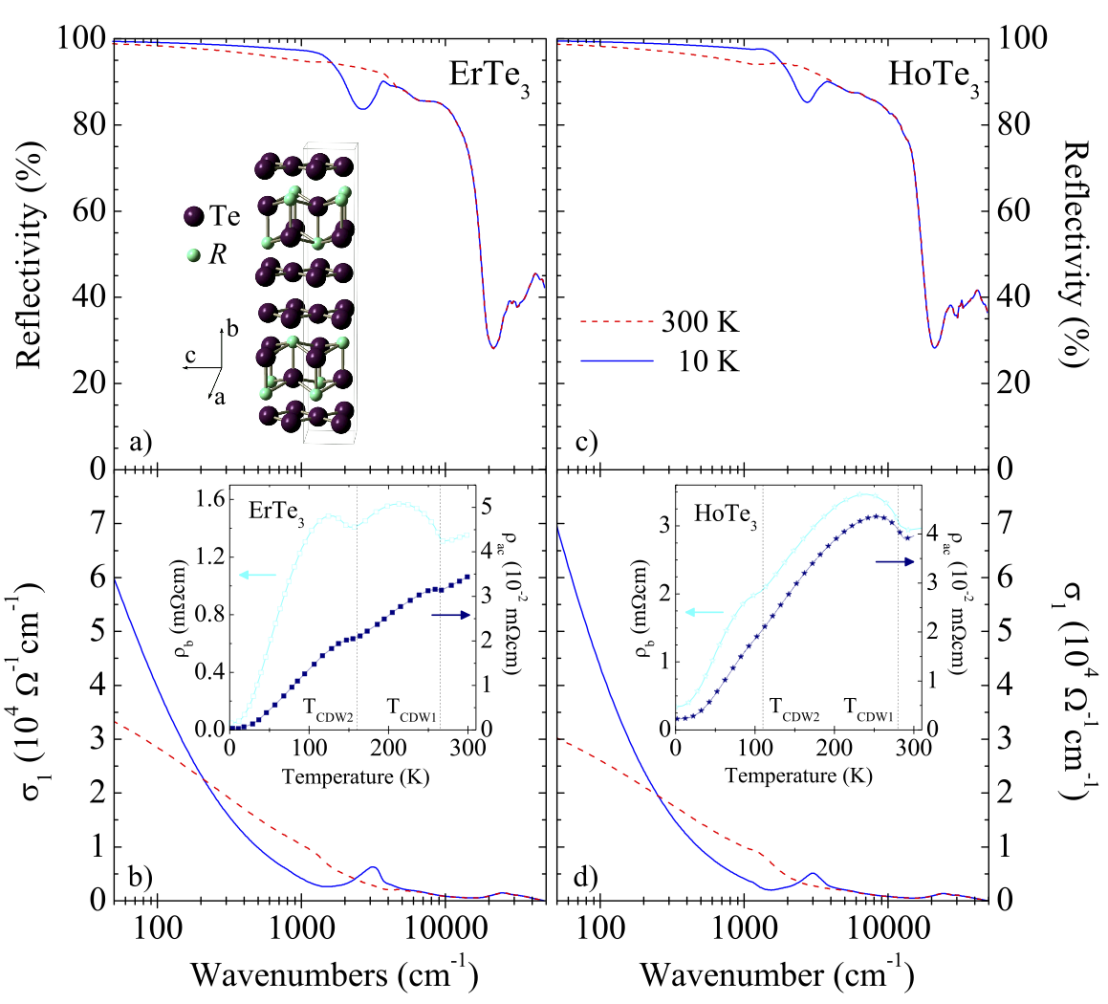Temperature dependence of the excitation spectrum in the charge-density-wave ErTe3 and HoTe3 systems

Recently, we focused our attention on HoTe3 and ErTe3, as representative members of the heavy rare-earth tri-tellurides (inset Fig. 3.14a) with transition temperatures (TCDW1 and TCDW2, both below 300 K) into the uni- and bidirectional CDW states, respectively (insets Fig. 3.14b-d). This allows us to have access to the temperature dependence of the relevant energy scales (e.g. the CDW gaps), on which very little was known. We compared the temperature dependence of the CDW phase transition with the previously studied impact of the lattice compression and of the pressure induced dimensionality crossover on the CDW formation.
Figures 3.14a and 3.14c display R(ω) for both compounds at 300 K (i.e., in the so-called normal state) and at 10 K (i.e. within the CDW states). At 10 K one can recognize the depletion in R(ω) at about 3000 cm-1. These spectra are very much reminiscent of what has been seen in our previous studies on RTe3 as a function of chemical and applied pressure. Exploring such a large spectral range allows us to perform reliable Kramers-Kronig (KK) transformations in order to achieve the optical functions. The overall view of the real part σ1(ω) of the complex optical conductivity at those two selected temperatures is shown for both compounds in Fig. 3.14b and 3.14d.

We have extracted the single particle energy gap (ωSP), shown in Fig. 3.15 as a function of temperature. It is instructive to compare the relevant parameter ωSP achieved with our optical experiments when varying the temperature and upon lattice compression. For the purpose of clarity, we limit our comparison to the chemical series (open squares in Fig. 3.15). We took the ωSP values measured at 300 K, normalized with the gap of LaTe3, assumed to be the largest one for RTe3. Within the CDW state, we evince a general common trend in the development of the gap for the RTe3 compounds, when changing R, as well as for HoTe3 and ErTe3, when varying the temperature. As comparison, we reproduce the BCS temperature dependence of the order parameter. The resulting overall decrease of the CDW gap equivalently with increasing temperature or lattice compression roughly agrees with the theoretical predictions, based on the mean-field like BCS theory.